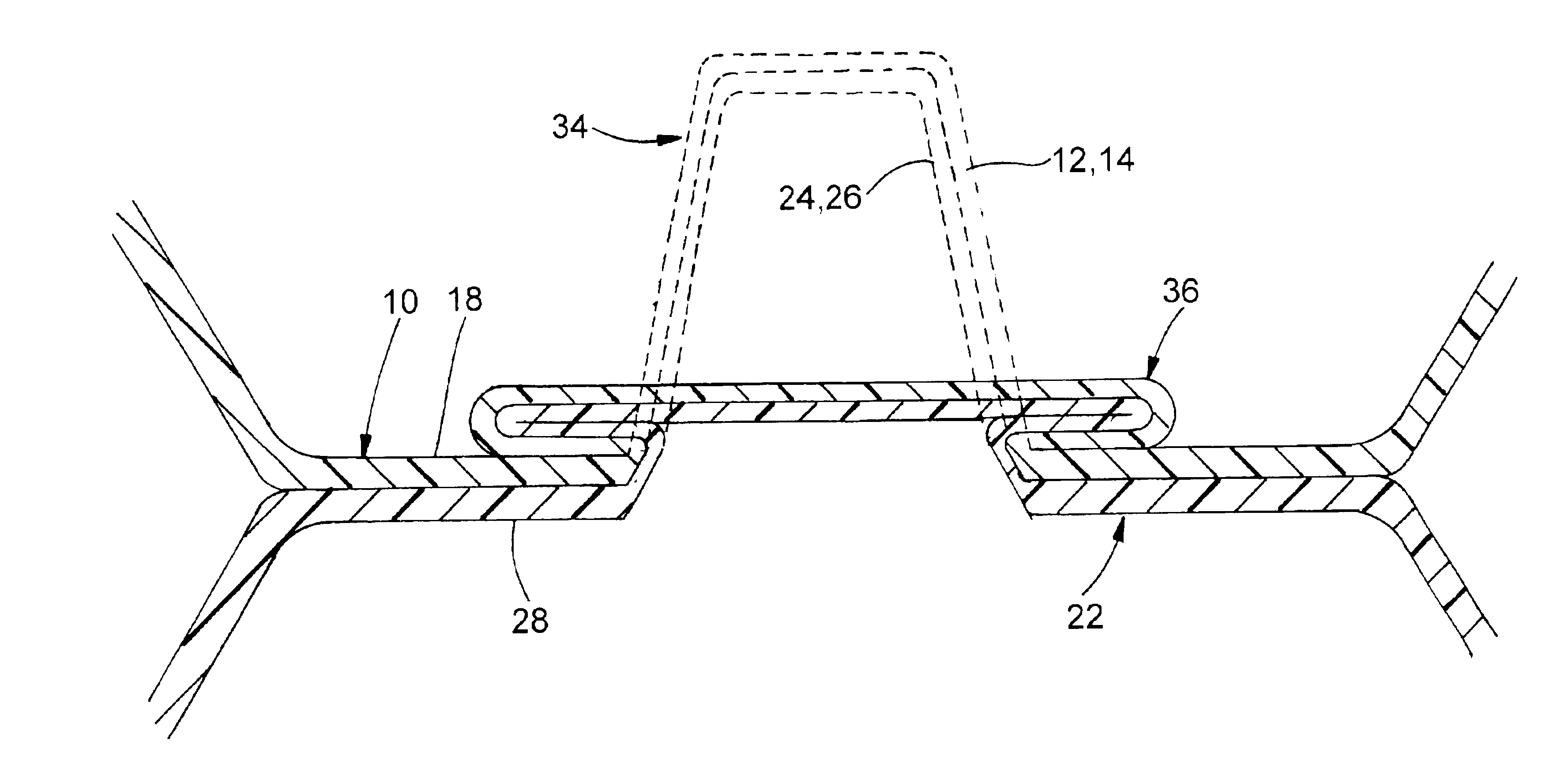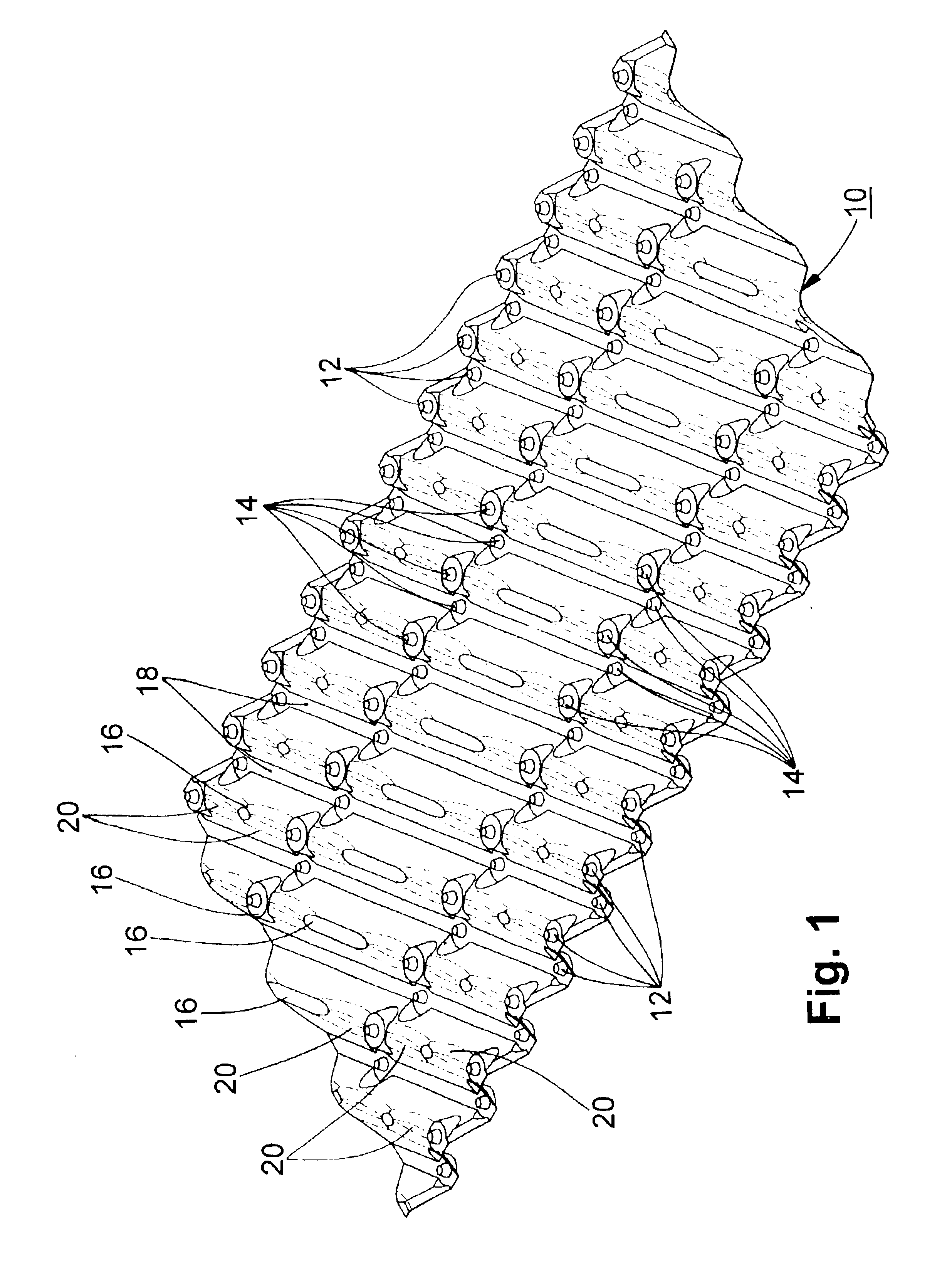Method of making contact bodies
a contact body and body technology, applied in the field of contact bodies, can solve the problems of separation, wear and deterioration of adhesives and spot welds, and lack of durability, and achieve the effect of reducing the risk of separation
- Summary
- Abstract
- Description
- Claims
- Application Information
AI Technical Summary
Benefits of technology
Problems solved by technology
Method used
Image
Examples
Embodiment Construction
Certain terminology is used in the following description for convenience only and is not limiting. The words “lower,”“upper,”“bottom,”“top,”“front,”“back,”“left,” and “right” designate directions in the drawings to which reference is made, but are not limiting with respect to the orientation in which the contact body or contact sheets or apparatus used in making the contact body are oriented in use or in the manufacturing process. The terminology includes the words specifically mentioned above, derivatives thereof and words of similar import.
Furthermore, as used herein, the article “a” or a singular component includes the plural or more than one component, unless specifically and explicitly restricted to the singular or a single component.
Contact sheets that can be used in accordance with the present invention can be of any type, so long as at least two of the contact sheets have a projection extending out from one surface of the sheet, each projection defining a corresponding depre...
PUM
| Property | Measurement | Unit |
|---|---|---|
| shape | aaaaa | aaaaa |
| heat | aaaaa | aaaaa |
| wettability | aaaaa | aaaaa |
Abstract
Description
Claims
Application Information
 Login to View More
Login to View More - R&D
- Intellectual Property
- Life Sciences
- Materials
- Tech Scout
- Unparalleled Data Quality
- Higher Quality Content
- 60% Fewer Hallucinations
Browse by: Latest US Patents, China's latest patents, Technical Efficacy Thesaurus, Application Domain, Technology Topic, Popular Technical Reports.
© 2025 PatSnap. All rights reserved.Legal|Privacy policy|Modern Slavery Act Transparency Statement|Sitemap|About US| Contact US: help@patsnap.com



